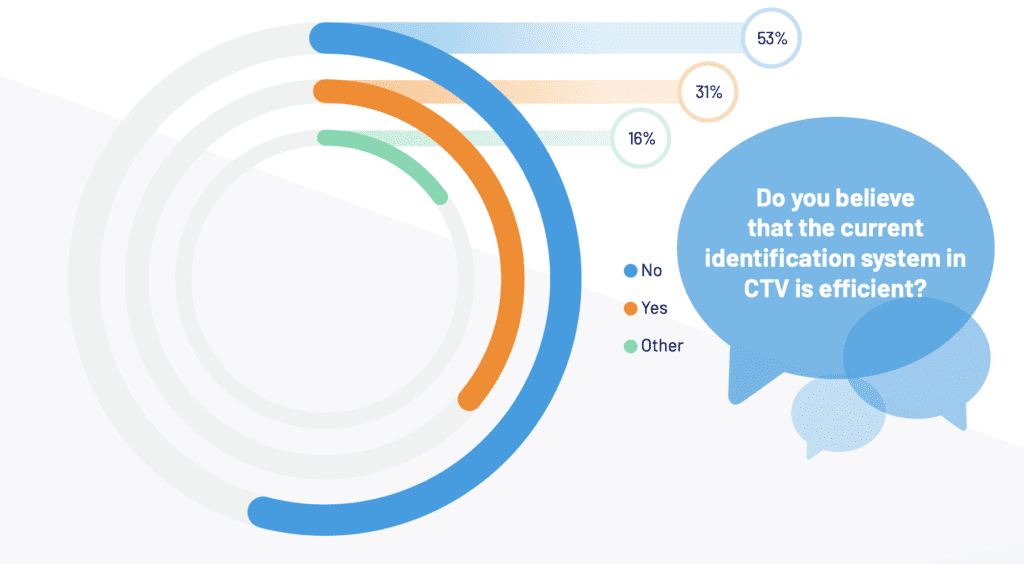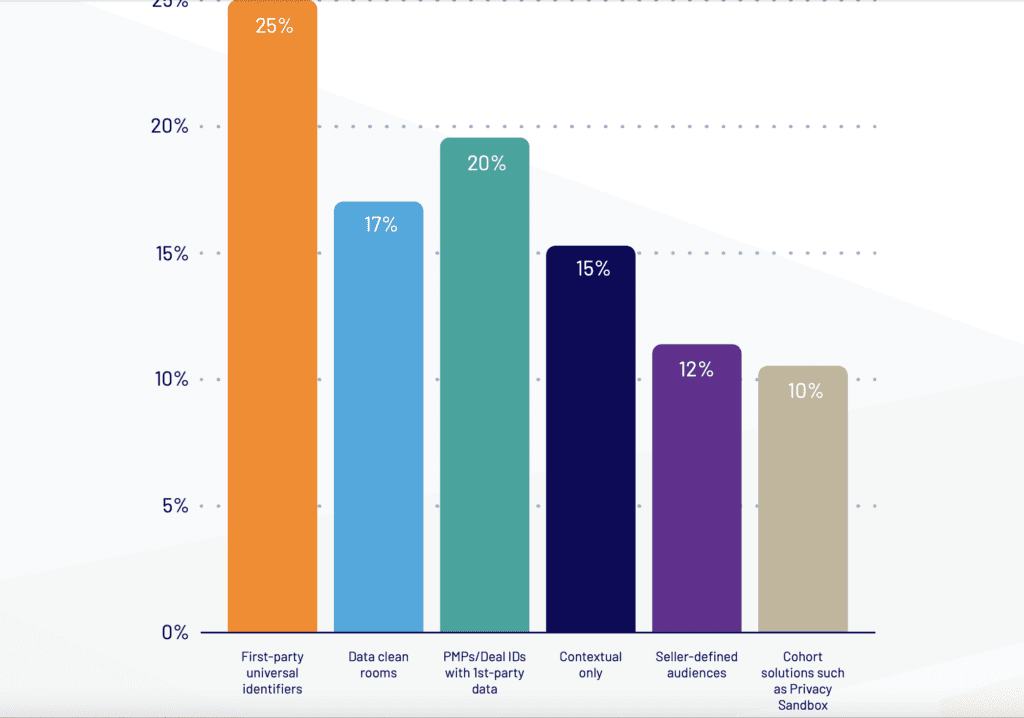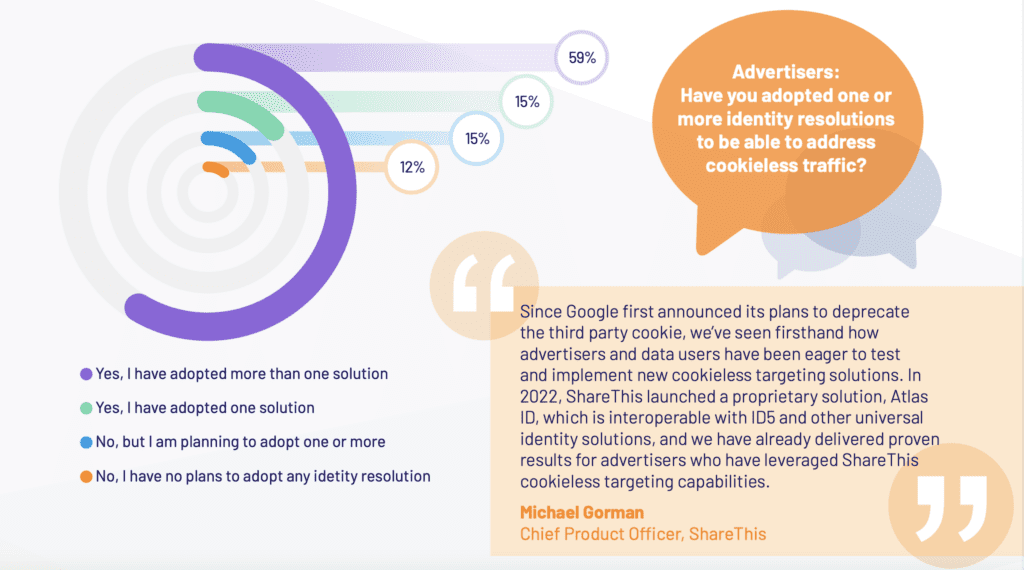
When Chrome first announced its plans for cookie deprecation, the industry was scrambling. Yet, according to ID5’s latest survey, the industry feels prepared for the impending cookiepocalypse because they are testing and tailoring post-cookie solutions.
Approximately four years have elapsed since Google sent shockwaves throughout the advertising sector by revealing its intention to phase out third-party cookies. Following several deadline extensions, Google has now firmly committed to a specific timeline for 2024, ushering in a phased approach.
Commencing with a 1% reduction in third-party cookies in January 2024, this reduction will gradually intensify, culminating in the complete elimination of all third-party cookies by June 2024. As 2023 unfolded, the industry received long-awaited answers while also witnessing an increased embrace of identity solutions and a heightened awareness of the challenges related to cross-channel identity.
The challenges posed by the cookieless era and the emergence of platforms like CTV and Retail Media Networks are opportunities for growth, evolution, and reshaping the very foundations of digital advertising. As the industry marches on, staying ahead of the curve is necessary for survival and success. This is what ID5 explored in “The State of Digital Identity 2023” report.
Adapting to the Cookieless Era
Publishers and advertisers are struggling with a fundamental shift in how best to utilize data in a privacy-centric way, but the industry is committed to change.
Eighty percent of survey respondents expressed confidence in their long-term addressability strategy. Testing cookieless alternatives, especially in browsers like Safari and Firefox, which comprise about 40% of the global inventory, has contributed to this increased assurance through favorable outcomes. Industry experiments are offering valuable insights into the potential characteristics of a wholly cookieless future, as well as the ability to reach previously overlooked audiences within cookieless browser environments.
Amid these changes, advertisers emerge as pivotal players. The report reveals a staggering truth: 87% of advertisers have allocated resources for identity strategy development. The industry is moving ahead, and many believe cookie deprecation is a positive evolution. 54% of respondents agree with this sentiment.
“We strongly believe that the end of third-party cookies is a great opportunity for the advertising ecosystem to rebuild itself, implementing privacy-by-design and privacy-by-default from the beginning, and rightfully empowering Publishers, Retailers, and Brands with their first-party consented data,” said Alexandre Bours, Vice President of Product, Mediarithmics
The CTV Identity Crisis
Building a successful addressability strategy demands a multifaceted approach, emphasizing the need for rigorous testing and tailoring to individual needs. The array of cookieless alternatives has introduced new challenges and opportunities. Delays in the adoption and testing of these alternatives may expose organizations to the risks of revenue loss and various other consequences in the latter half of 2024.
Despite the urgency, there is still time for those who have postponed their cookie alternative endeavors. As Allison Schiff, Managing Editor at Adexchanger, said, “The best time to have started testing cookie alternatives… was yesterday. The second-best time is now.”
Although ad tech’s identity crisis affects other mediums outside the web — its reach is far and intricate, much like a spider web. CTV, in particular, has gained prominence in the advertising space. However, the adoption of CTV advertising has yet to reach its full potential. Many survey respondents cited that the CTV identification system holds many inefficiencies.
The lack of a standardized approach to user identification, consent collection, and data activation in CTV, along with concerns about privacy and transparency, stands as a formidable barrier.
Testing and Tailoring is Crucial For Post-Cookie Survival
In addition to Google’s clear timeline for third-party cookie deprecation, the tech titan has made Privacy Sandbox APIs available for testing, providing a cookieless alternative. Not limiting themselves to one approach, publishers and advertisers explored various identity solutions in 2023.
Respondents, following last year’s trends, identified first-party universal IDs as the most promising solution, widely acknowledged for their privacy-conscious and future-proof nature. Meanwhile, other respondents also tested PMPs and Deal IDs with first-party data, contextual advertising, seller-defined audiences, cohort solutions like Privacy Sandbox, and data clean rooms.
When businesses contemplate potential solutions, their primary concerns center on scale and security, but cost is also a significant factor, according to respondents. The success of an identifier hinges on its widespread adoption and availability within the market, as both supply and demand sides seek solutions with substantial adoption rates to optimize outcomes.
Furthermore, the regulatory environment has become progressively intricate. Europe and the U.S. have implemented stringent privacy laws. As a result, companies must ensure compliance with these regulations to avoid regulatory consequences and safeguard their brand reputation.
While most respondents believe they already have an operational cookieless strategy, almost 20% said it would take them one to three months to implement a future-proof strategy. Q4 of 2023 is the perfect time to prepare, but organizations that need more than three months to implement a solution might struggle in 2024.
Most publishers and advertisers are adopting one or more solutions — 74% of respondents confirmed this. The statistic is a significant increase from 2022 when only 32% of advertisers had implemented a cookieless alternative.
Looking Ahead: The Industry is Innovating
In the latter half of 2023, the advertising industry has exhibited remarkable resilience and determination in anticipation of the impending discontinuation of third-party cookies. Google’s strict timetable for phasing out cookies was a driving force, prompting the industry to capitalize on this opportunity to reimagine its approach to identity resolution collectively.
The industry expected a year primarily devoted to learning, but surprisingly, it transformed into a year of decisive action. Recognizing the essential nature of this transition, advertisers, publishers, and ad tech platforms have taken concrete measures to flourish in the post-cookie era.
While publishers and advertisers have yet to reach the finish line, most have taken significant strides in 2023 to brace for the cookie’s demise in 2024. Publishers have borne the weight of this transformation since 2020, and in 2023, advertisers have joined forces to shoulder this responsibility.
The advertising ecosystem is on a promising trajectory as it approaches 2024. Although the initial months of the year will bring some growing pains as Google initiates the process of eliminating third-party cookies, it is apparent that most advertising participants (to be precise, 80% of respondents) are poised to embark on this next chapter with confidence.
To read the full State of Digital Identity report, visit ID5.



